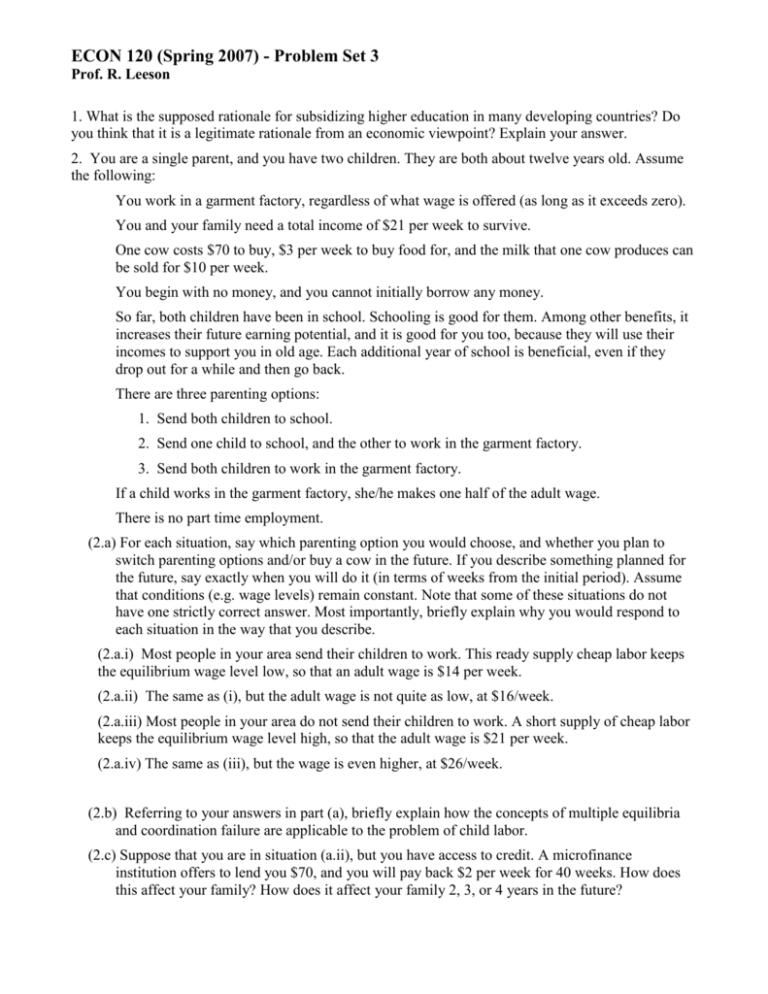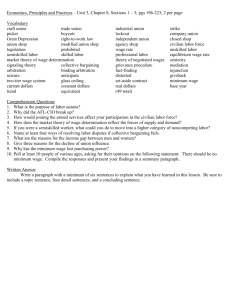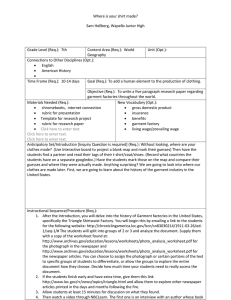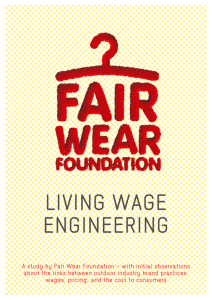HW 3
advertisement

ECON 120 (Spring 2007) - Problem Set 3 Prof. R. Leeson 1. What is the supposed rationale for subsidizing higher education in many developing countries? Do you think that it is a legitimate rationale from an economic viewpoint? Explain your answer. 2. You are a single parent, and you have two children. They are both about twelve years old. Assume the following: You work in a garment factory, regardless of what wage is offered (as long as it exceeds zero). You and your family need a total income of $21 per week to survive. One cow costs $70 to buy, $3 per week to buy food for, and the milk that one cow produces can be sold for $10 per week. You begin with no money, and you cannot initially borrow any money. So far, both children have been in school. Schooling is good for them. Among other benefits, it increases their future earning potential, and it is good for you too, because they will use their incomes to support you in old age. Each additional year of school is beneficial, even if they drop out for a while and then go back. There are three parenting options: 1. Send both children to school. 2. Send one child to school, and the other to work in the garment factory. 3. Send both children to work in the garment factory. If a child works in the garment factory, she/he makes one half of the adult wage. There is no part time employment. (2.a) For each situation, say which parenting option you would choose, and whether you plan to switch parenting options and/or buy a cow in the future. If you describe something planned for the future, say exactly when you will do it (in terms of weeks from the initial period). Assume that conditions (e.g. wage levels) remain constant. Note that some of these situations do not have one strictly correct answer. Most importantly, briefly explain why you would respond to each situation in the way that you describe. (2.a.i) Most people in your area send their children to work. This ready supply cheap labor keeps the equilibrium wage level low, so that an adult wage is $14 per week. (2.a.ii) The same as (i), but the adult wage is not quite as low, at $16/week. (2.a.iii) Most people in your area do not send their children to work. A short supply of cheap labor keeps the equilibrium wage level high, so that the adult wage is $21 per week. (2.a.iv) The same as (iii), but the wage is even higher, at $26/week. (2.b) Referring to your answers in part (a), briefly explain how the concepts of multiple equilibria and coordination failure are applicable to the problem of child labor. (2.c) Suppose that you are in situation (a.ii), but you have access to credit. A microfinance institution offers to lend you $70, and you will pay back $2 per week for 40 weeks. How does this affect your family? How does it affect your family 2, 3, or 4 years in the future?










